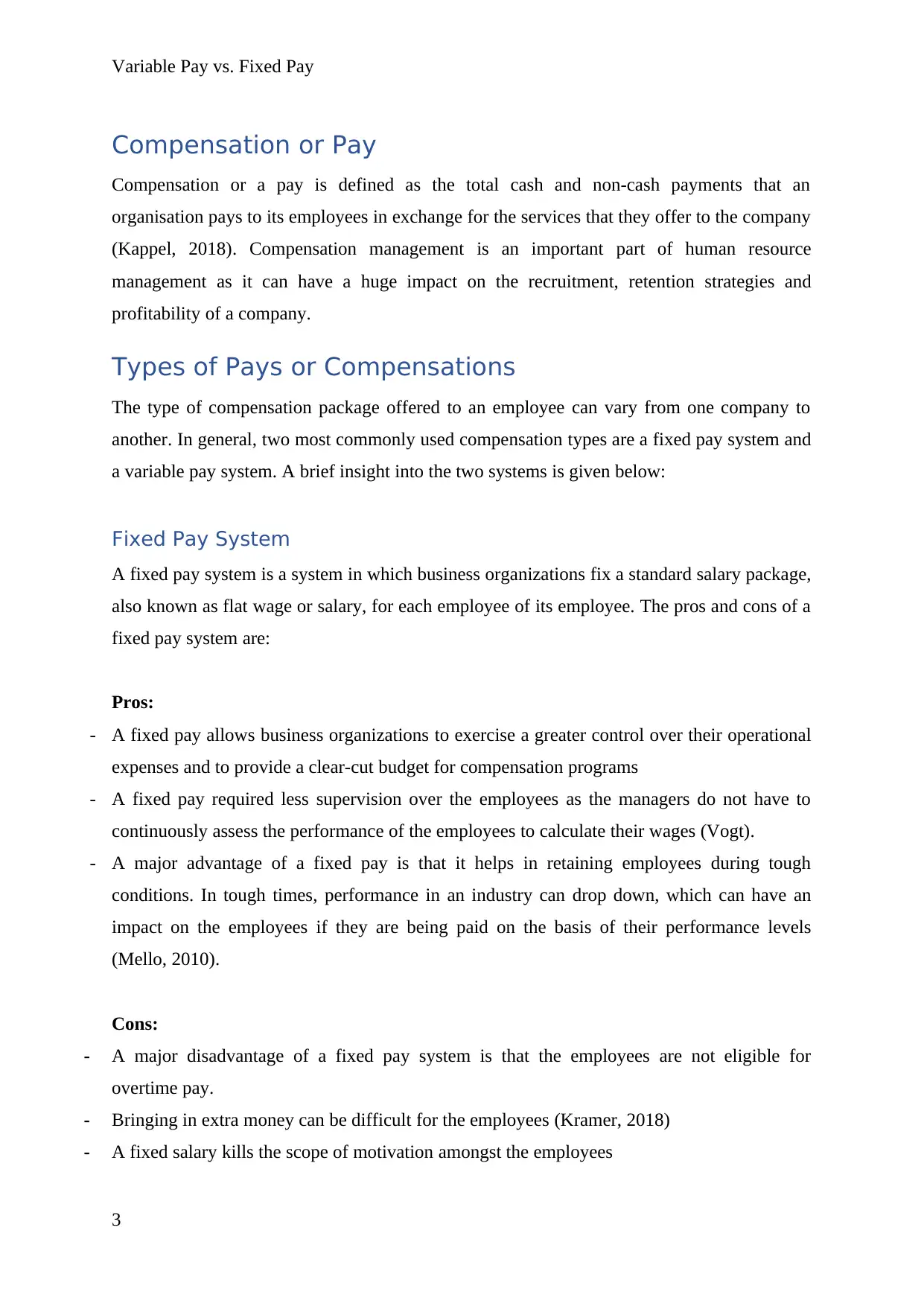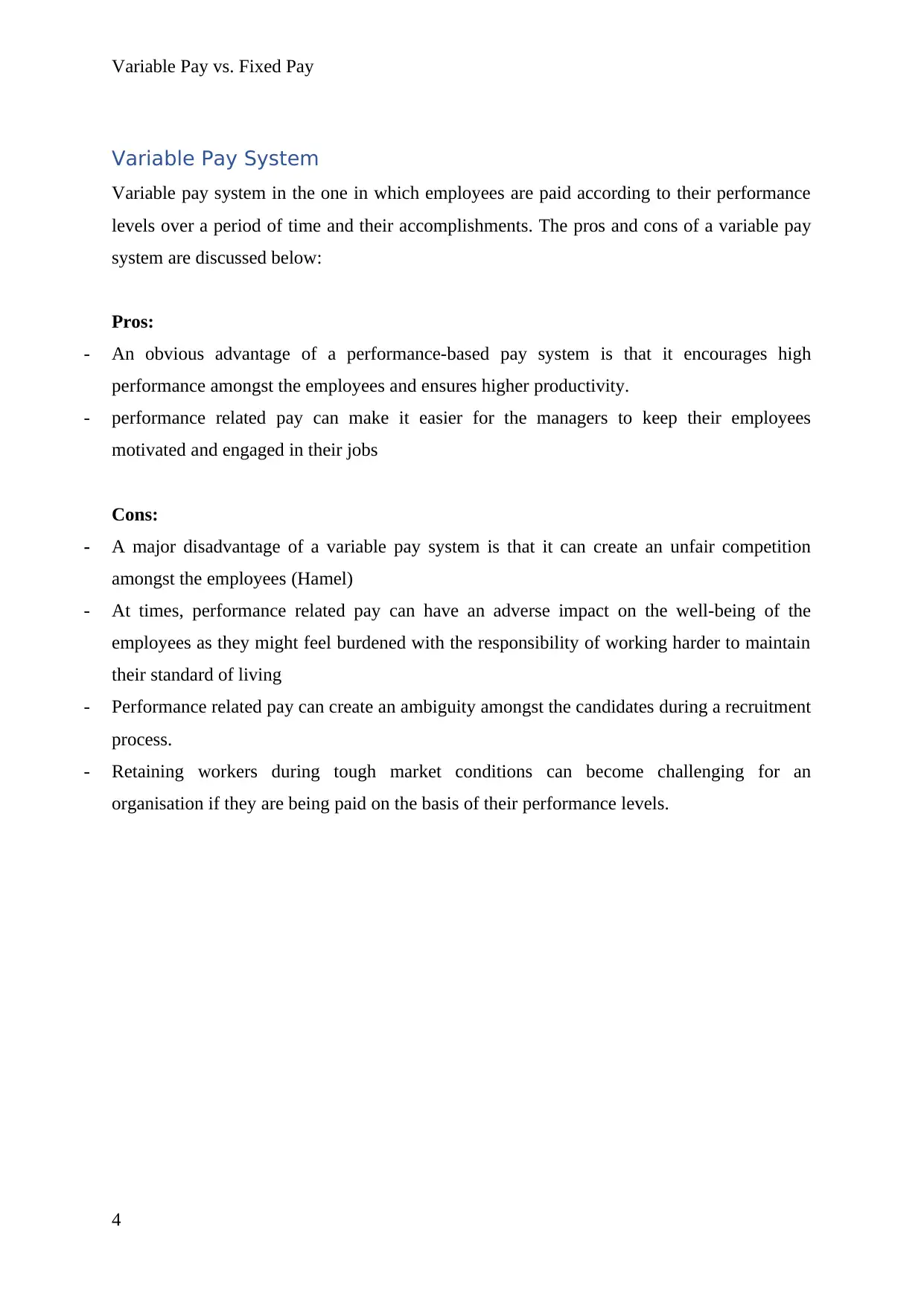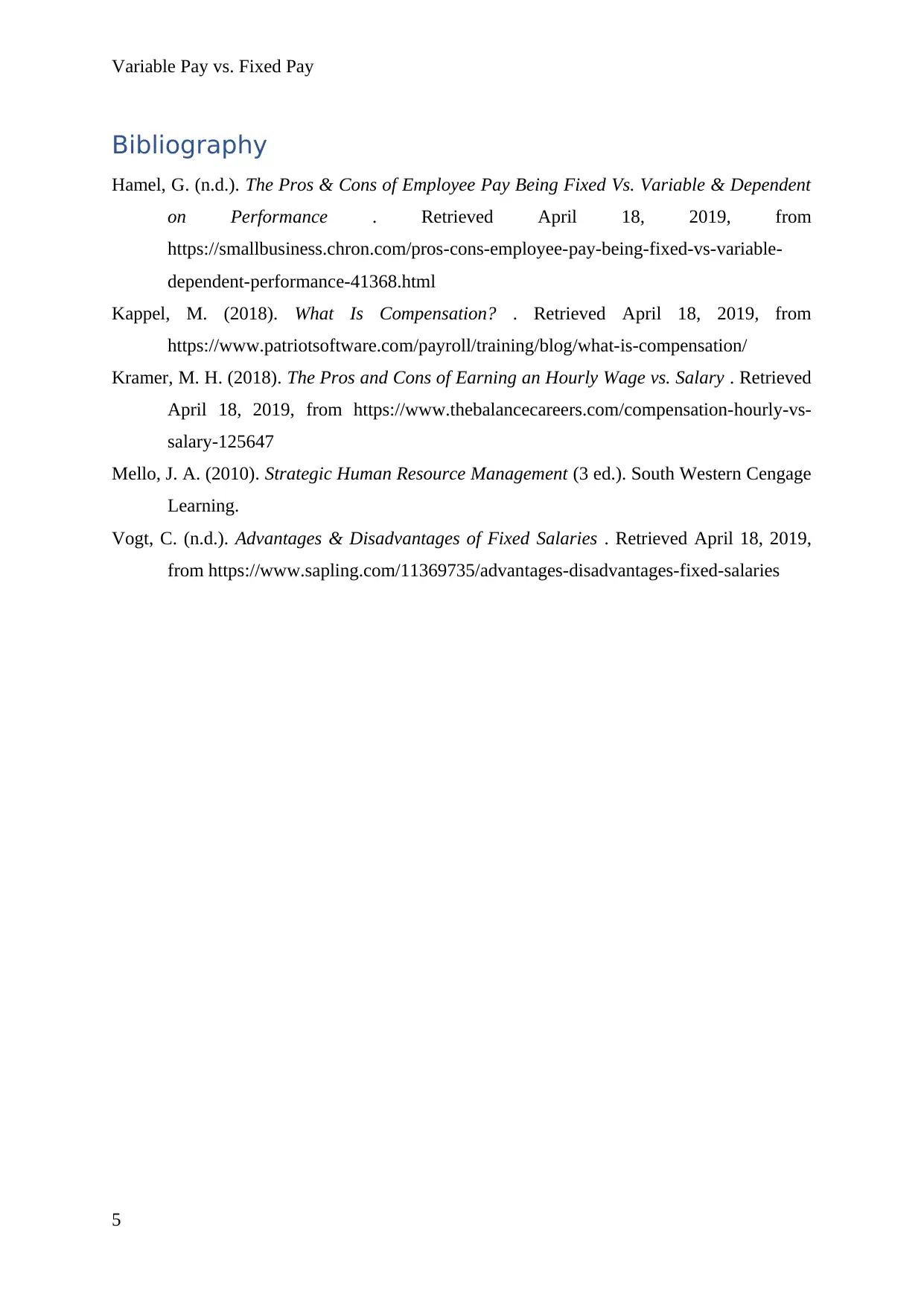HRM 961121: Variable Pay vs. Fixed Pay - Compensation Systems
VerifiedAdded on 2023/01/20
|5
|726
|47
Report
AI Summary
This report provides a comprehensive overview of fixed and variable pay systems within the context of Human Resource Management (HRM). It begins by defining compensation and its significance in HRM, highlighting its impact on recruitment, retention, and profitability. The report then explores the two primary types of compensation: fixed pay and variable pay. For each system, the report outlines the pros and cons, providing a balanced analysis. The fixed pay system, characterized by a standard salary, is examined for its ability to control operational expenses and its role in employee retention, along with its limitations in terms of overtime pay and employee motivation. The variable pay system, which ties compensation to performance, is analyzed for its potential to boost productivity and employee engagement, while also addressing potential drawbacks such as fostering unfair competition and creating uncertainty. The report concludes by providing a bibliography of sources used to support the analysis.
1 out of 5












![[object Object]](/_next/static/media/star-bottom.7253800d.svg)